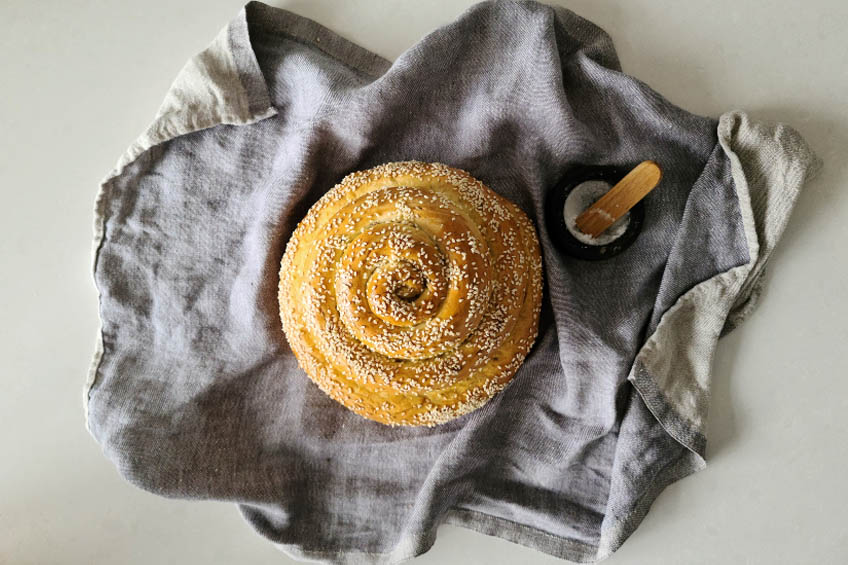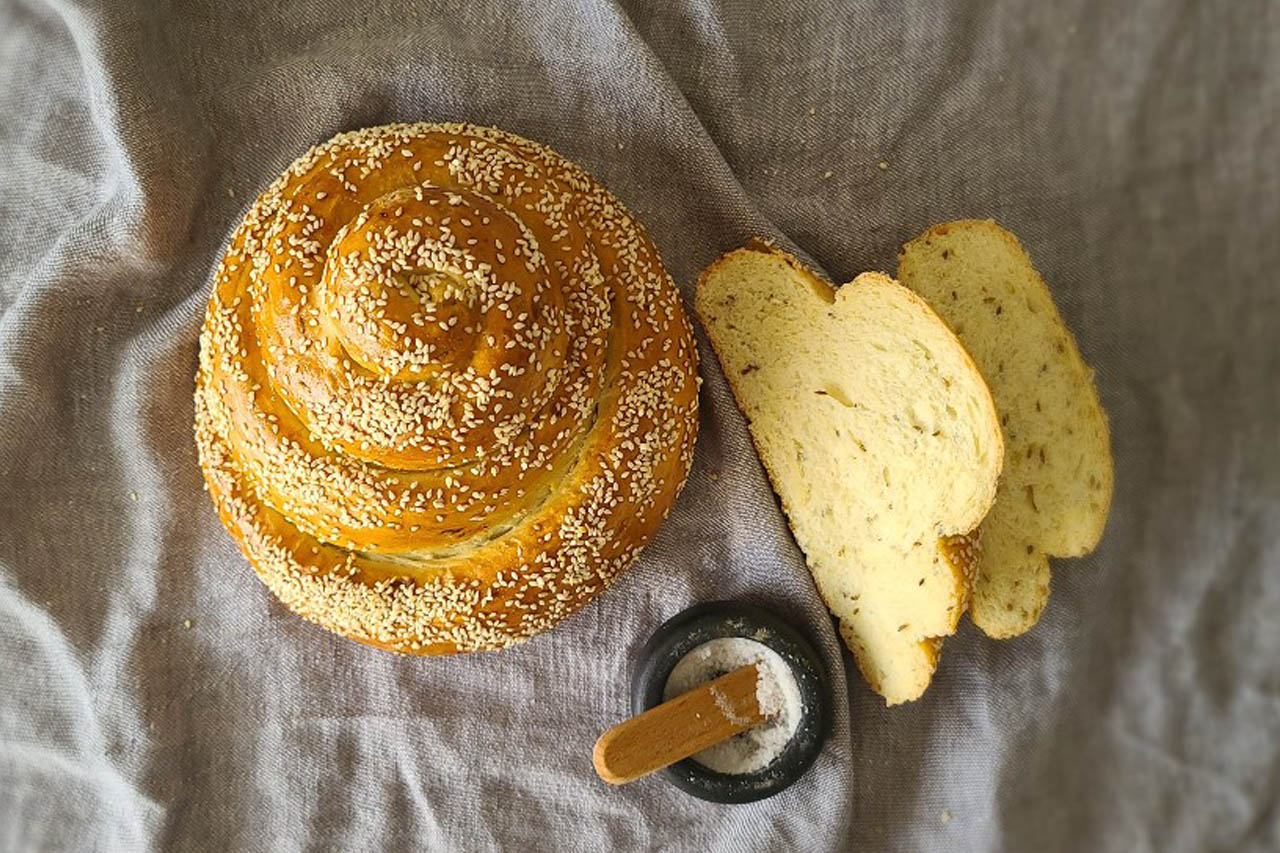
For most Canadians, challah is best known as a wonderfully fluffy, eggy, yeasty and sweet braided bread appreciated by Jews and non-Jews alike. Whether it’s enjoyed for Shabbat and Jewish holidays or as the base of custardy French toasts and decadent deli sandwiches, this golden Ashkenazi loaf has origins in Central and Eastern Europe and is popular for good reason. But there are other delightful challah traditions, including lighter, more savoury loaves favoured among Sephardic and Mizrahi Jews of North African and Middle Eastern ancestry.
Unlike the multi-stranded braided challahs, these loaves are commonly coiled into festive (and far easier) “crowns,” which, during Rosh Hashanah (the Jewish New Year), take on special meaning to symbolize the continuity of life. The flavours of these loaves are also wildly different. My Moroccan grandmother’s challah was always laced with whole spices such as cumin and caraway seeds that were mixed into the smooth and airy crumb. It was the perfect pairing for a table full of spicy, saucy and tangy cooked salads and tagines. This challah recipe takes me back to everything I loved about my grandmother’s cooking and being in her kitchen.
Related: We Share Our Favourite Thanksgiving, Rosh Hashanah and Fall Harvest Recipes
Love Claire’s challah? Be sure to try her upside-down apple cake for a gorgeous Rosh Hashanah dessert.
ingredients
Dough
Egg Wash and Topping (optional)
directions
Rest time: 3-4 hours. This recipe can easily be made vegan with a couple simple swaps, outlined below.

For the dough, in a skillet over medium heat, toast sesame seeds, cumin, caraway or other seeds until fragrant (and before they start to pop), about 2 minutes. Transfer to a plate and set aside to cool.
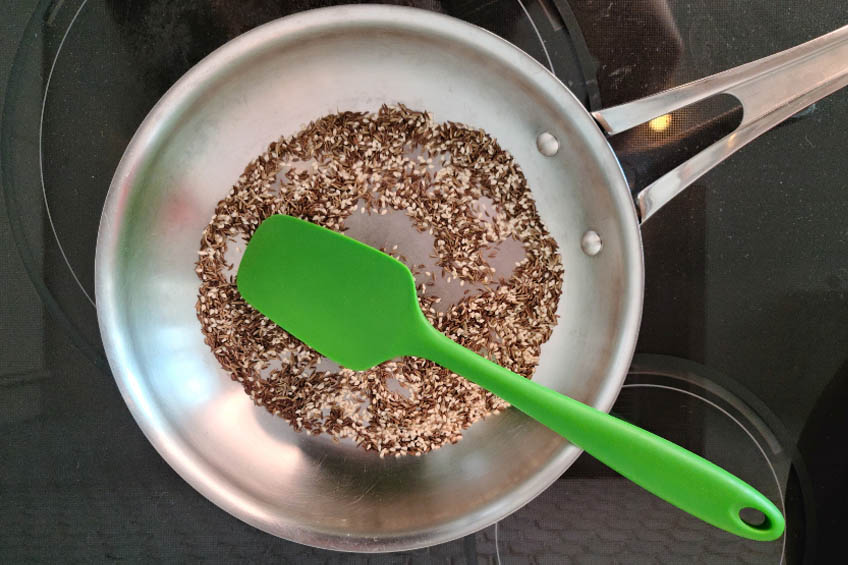
Combine all of the dough ingredients (including the seeds), then mix and knead for about 10 minutes by hand, stand mixer (with dough hook) or bread maker until smooth, soft and supple. If using egg, add ¾ cup of warm water first.
Option: For a vegan “water challah” without egg, use 1 cup of water. If the dough is too stiff, add more warm water, one tablespoon at a time, as needed. If it’s too sticky, add a little more flour.
Let the dough rise in a tightly covered bowl for roughly 2 hours until puffy and about doubled in size.
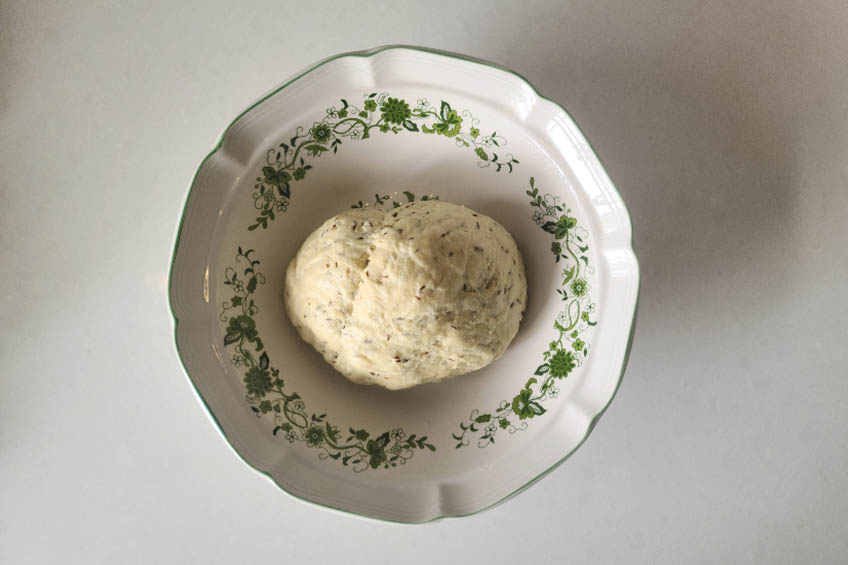
Sprinkle cornmeal on a lightly-oiled baking sheet.
With oiled hands, gently deflate the dough and transfer it to a lightly greased work surface.
To make one large loaf, roll the dough into a 40 to 50-inch-long rope. (If you don’t have enough work space, roll it one half at a time, bending the rope in the middle.) If the dough isn’t stretching easily, let it rest covered for about 10 minutes, then continue rolling. For two smaller loaves, aim for 25-inch ropes.
Let the rope(s) rest for 5 minutes. Form the rope into a coil, starting from one end. Tuck the second end under the finished coil.
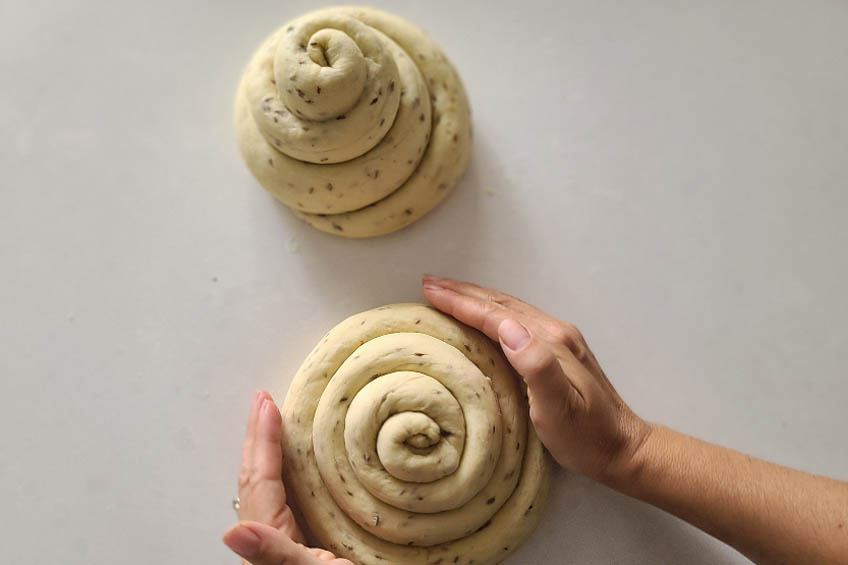
Place the coil(s) on the prepared baking sheet(s), one loaf per pan.
To make the egg wash topping, mix the reserved egg with 1 Tbsp water and a pinch of salt.
Option: For a vegan “water challah” version, skip this step or substitute egg wash with maple syrup or aquafaba (without water).
Brush dough coil(s) with a first layer of egg wash. Cover coil(s) with a large inverted bowl. Let stand for about 90 minutes, until very puffy.
Near the end of the rising time, place a rack in the middle of your oven and preheat to 400°F.
Brush a second layer of egg wash onto dough coil(s) (this extra step will make the loaf beautifully shiny) and sprinkle generously with sesame or poppy seeds.

Place baking sheet in center of preheated oven (for two small loaves, place the baking sheets side by side or one at a time) and bake for 30 minutes or until the loaf is a rich, golden colour and the bottom is crispy. To check doneness, a digital thermometer poked into the centre of the loaf should read 190°F. Transfer to a rack to cool before serving or slicing.
